COMMENT | By the Minister in the Prime Minister's Department (PMD) Abdul Rahman Dahlan's own admission in a recent comment, the East Coast Railway (ECRL) is built based on soft and favourable loans from China.
And, that a project of such magnitude, which traverses the East and West coast of Malaysia, is simply too economically "strategic" to be owned by any foreign countries.
The reason he further cited was the lesson learned from former premier Dr Mahathir Mohamad and former finance minister Daim Zainuddin, where Japanese "soft loans", which were denominated in Japanese Yen, proved to be a disaster, as the value of Japanese Yen subsequently doubled, consigning Malaysia to repaying the loan at twice the original figure.
Now, if Rahman Dahlan was so sure that Malaysia is repaying a more expensive loan to Japan now, why didn't he list out the figures borrowed, and the amount repaid? Better yet, list the figures of the ECRL, and save all of us a trip back memory lane like the much debunked Royal Commission of Inquiries (RCI) that is nothing but a selective witch hunt on the forex losses that occurred 32 years ago.
The fact is Rahman Dahlan cannot disclose any figure. Indeed, according to DAP MP Tony Pua, Transport Minister Liow Tiong Lai (photo) has promised to deliver all the facts and figures, ostensibly collected by the HSS Integrated (HSSI) by Nov 2016. But we are already in Dec 2017, and the study is still missing. Why?
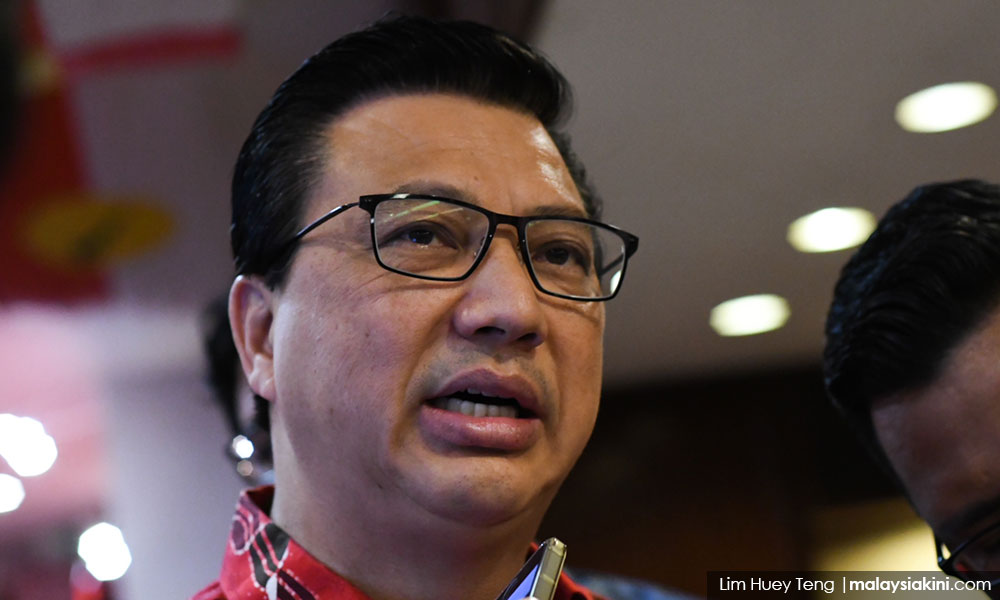
Pua also raised the issue of the feasibility study by the government-appointed engineering consultants, HSSI, saying the company had estimated in Dec 2015 that the project’s value was RM29 billion (RM53.2 million per km), whereas China-owned China Communications Construction Company (CCCC) was awarded the contract at RM55 billion (RM91.7 million per km).
“We have demanded for the HSSI feasibility study to be publicly disclosed and Liow has promised in Parliament in November last year to ‘publish’ the report when it is ‘finalised’. However, the HSSI report remains a secret document with the Umno/Barisan Nasional government.”
Truly, what is going on?
But surely, Rahman Dahlan must have some figures in his mind. He said ECRL is expensive because of the high percentage of tunnels and bridges.
Yet, the truth is this: despite having only 23 percent tunnels and bridges, compared to 62 percent on the Laos Rail; ECRL cost/km is 40 percent higher than Laos.
Compared to the very difficult Sichuan-Lhasa in Tibet with four times more tunnels and bridges, ECRL should be a walk in the park. However, cost per km is the same. Are Malaysians once again being literally and figuratively taken for a ride on ECRL, right after the debacle of 1MDB? It is fast becoming the largest railway robbery ever in the history of mankind.
As things are, ECRL will be running on the existing 77km Kuantan-Kerteh Rail. The rehabilitation cost of the stretch is RM2 billion, i.e. RM28 million per km. Thus, this alone should reduce the cost of the overall project by RM4 billion.
Yet, not only is there no reduction, the ECRL has produced no study on the incidental fees, as shown below:
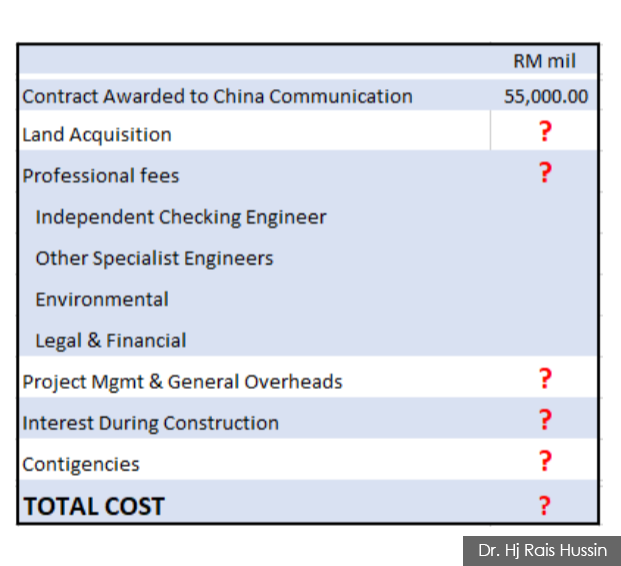
Thailand obtained a high-speed rail from China for almost the same cost per km of ECRL. But the Thais had 18 high-level negotiations and the project is still not going forward yet.
In fact, the latest news coming from Thailand is that China wants to impose conditions on Thailand, where China could seize the assets from Thailand, in the event of any default by Thailand upon the completion of the project. Thailand, on the other hand, does not want the investment from China to exceed 25 percent, lest Thailand is subject to even more strenuous conditions.
In contrast, Najib announced the total costs of ECRL would be RM55 billion, only to have the CEO of the Chinese construction railway contractor correcting him the very next day then, that it is actually RM46 billion.
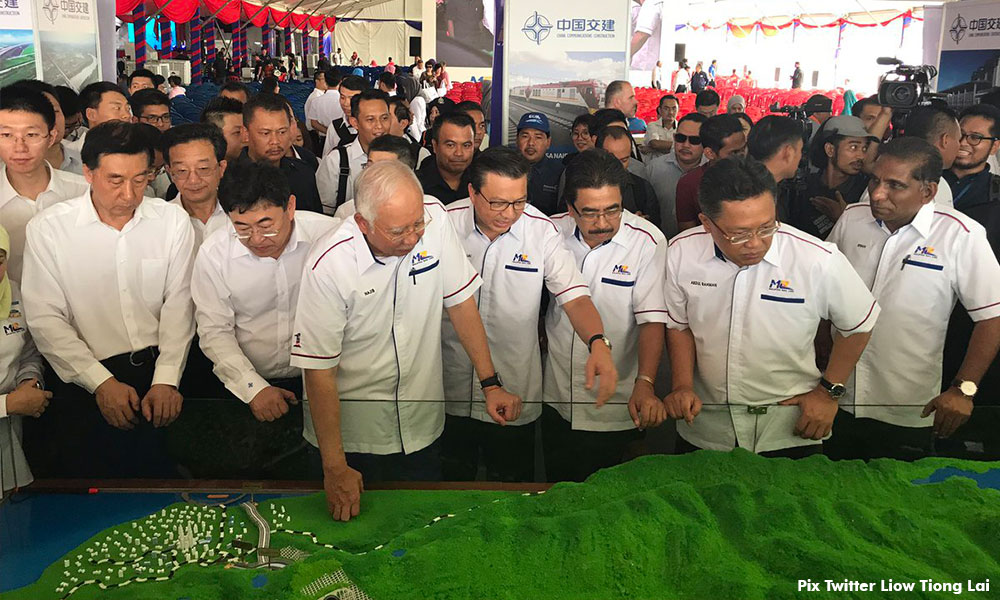
Should Malaysians now trust Najib, who allegedly lost RM42 billion or more (and still counting) in 1MDB, and pledged another RM60 billion to the US to strengthen the US economy or should we be trusting our "friendly CCCC CEO" from China? It is obvious that our negotiators didn’t do a good job, and Najib is clueless, and the Chinese company is probably working hands in gloves with Umno, only to have Umno trying to con him back.
If this is not a case of the right hand not knowing what the left hand is doing, I don't know what is. And to have Rahman Dahlan, a mere neophyte from Kota Belud, challenging Dr Mahathir and Daim Zainuddin in a statement obviously scripted by his office boy, is the highest disrespect of all. It shows total disregard for facts, figures, and feasibility studies. On all these, Rahman Dahlan can only get an F for his job.
To be sure, there is very little official information on ECRL. Rahman Dahlan (photo) has to concede on this simple fact. The most comprehensive source is from the Environmental Impact Analysis (EIA). However, there is no financial information available in the EIA. Thus the source of information on financials is from the snippets of announcements, e.g. the cost is RM55 billion and the benefit is 1.5 percent incremental GDP. Thus, even prominent economist KS Jomo has questioned the feasibility of the entire ECRL.
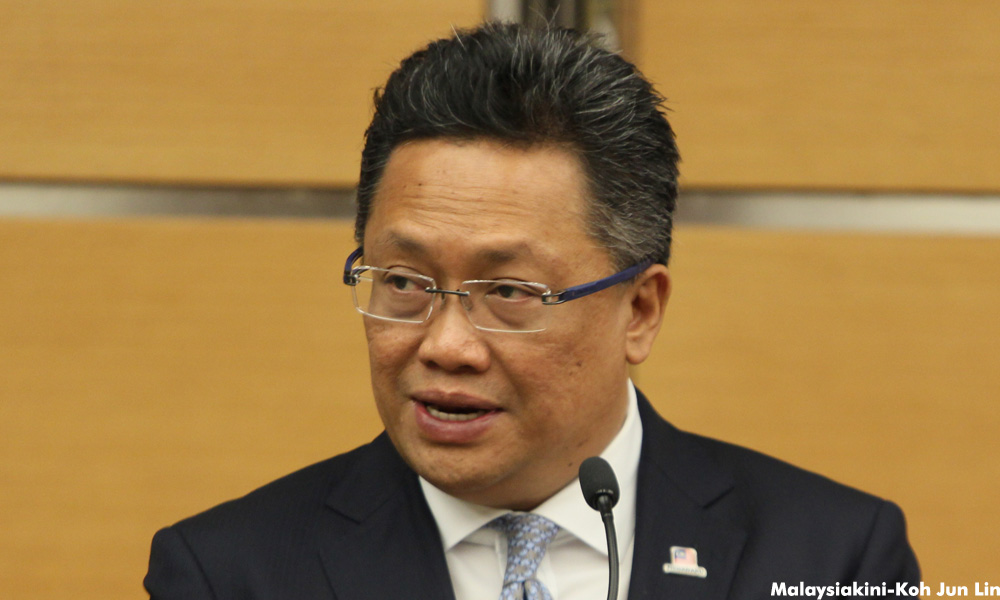
This alone calls into suspicion Rahman Dahlan's quick defense of the ECRL. Be it seven years or twenty years, no one in the PMD or Prime Minister's Office knows whether any serious job opportunities can be created at all. They are taking a walk in the dark, and hoping to lead Malaysians down the ditch, while they profit from it.
When Daim, in an interview, argued for the ECRL to be a loan, and not a foreign direct investment, he was making this point: the government of Najib, as is the rest of cabinet, is involved in sheer spin.
Instead of saying it is a loan - or, more precisely, debt - Najib has called it foreign direct investment. When Malaysia incurs more and more debt from China, not in one project, but up to 11 projects in all, then the sovereignty of Malaysia is either gone or thoroughly compromised.
Remember that even the Thais are wary of the Chinese that come bearing with gifts. This is why the Thais had been relentless in making sure all the devil in the details can be nailed down to the cross.
The Malay proverb is right, "kalau maruah digadai, seluruh kampung terhencai." In other words, when the pride of the country is mortgaged and given away, truly the country would be broken into pieces.
Rahman Dahlan is not a full minister in the truest sense of the word. As a "minister", in the PMD, his job is to defend the impossible in the Malaysian government.
And, one of the oddest things is to compare the loans with Japan in the heydays with the loans of China in the present. For the sake of history, the ECRL was originally conceptualised by the Japan International Cooperation Agency (JICA) in 1984.
The train alignment proposed begins from Kuala Lumpur Station and double tracked to Janda Baik; henceforth single-tracked to Wakaf Baru.
The JICA study was a very detailed 300-pager. The cost in 1984's ringgit was about RM4 billion, including 50 km of tunnels (as per current proposal). Project economics was marginal and if there is a 30 percent reduction of traffic, it would not be feasible. In other words, the whole project would fail if there was a mere dip of 30 percent traffic, which given the low traffic and ridership between the East and West coast, is highly plausible.
But the biggest constraint was that the project needed upfront equity to reduce borrowing cost. Dr Mahathir and Daim refused to pony up. But in the case of Najib, he was happy with an interest-free loan moratorium of seven years. After seven years, whether ECRL is making money or not, Malaysia would be saddled with the entire debt for the next 20 years or more; likely more, as the project has all the signs of a white elephant.
Indeed, studies on "One Belt One Road" have shown that even connecting London to X’ian in China is a major risk. Tom Holland of South China Morning Post in Hong Kong affirmed that the cost of the train freight would be three times more expensive than the sea, and the whole journey would only be three weeks less than cargoes and items otherwise shipped by freight.
For an economic project to be successful on rail, the items would have to be valuable, perishable and highly in demand in China. And, the trains would have to run non-stop every day. Yet, Malaysia, fixated on "One Belt One Road", has not even done the studies to look into their structural weaknesses. Even the billionaires in Hong Kong, including Li Ka Shing and Robert Kuok, have not openly touched the "One Belt One Road" project, as they too are afraid of their dismal failures.
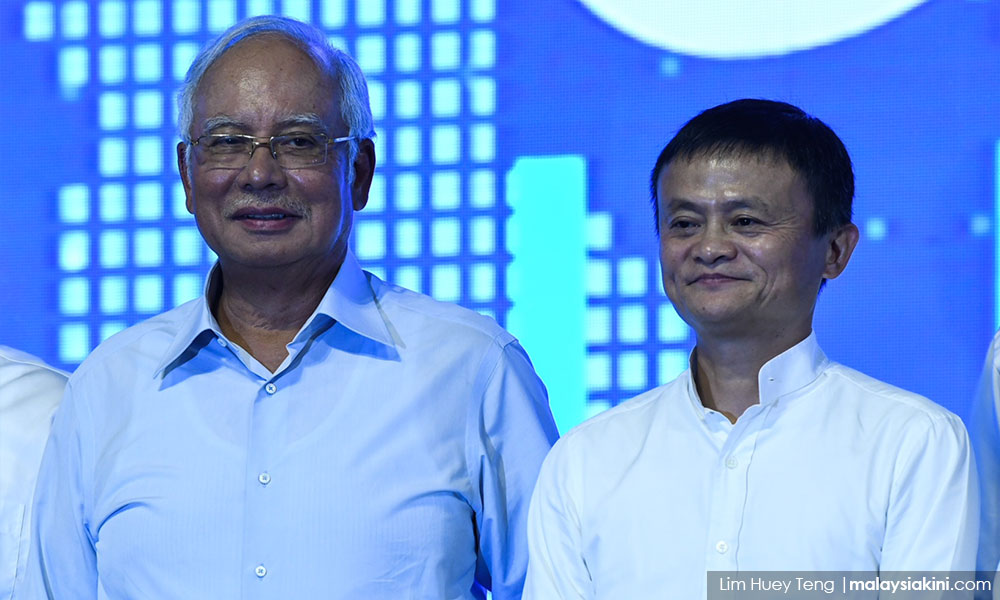
All Najib or Liow need to do is to Google on these studies in SCMP and they would find the answer. And, one must not forget that SCMP is owned by none other than Najib's good friend, Jack Ma (right in photo). If a newspaper that belongs to Jack Ma is doubtful of "One Belt One Road”, why should Malaysia be attracted to ECRL that is part of the ambitious initiative? Even Joe Ngai, the head of McKinsey in China and Hong Kong, has written in Channel News Asia, that the project of connecting with 64 countries is way too wobbly and unclear of details.
Indeed, Rahman Dahlan may yet contend that China's soft loans may be cheaper than the loans from elsewhere. But the loans must be immediately repaid after seven years, which means China has no love lost with Malaysia, despite often complimenting Malaysia as a "friend", while Malaysia deludes itself by calling China a "comprehensive strategic partner." Seven years is a short time to start repaying a RM55 billion project with many incidentals that haven’t' been factored into the whole equation.
If Malaysia had taken a loan from the Japanese government, as was customary of the administration of Mahathir and Daim, the goal was to spread it out to 25 even 30 years. If the yen had appreciated, it was due to market forces which Malaysia cannot control. But as long as our ringgit was strong, and in demand from the world, then there was no fear of the appreciation of the Japanese loan.
But, under Najib, the ringgit had dropped by more than 22 percent and has yet to recover from the slump. Yet, despite this clear risk, Malaysia still agreed to repay China in seven years, at a time when the renminbi (RMB) is growing stronger and stronger due to the growing status of China as the number 2 (and by 2025, potentially number 1) economic power of the world, if not already given China’s deliberate delays in disclosing its official annual trade and balance of trade statistics. Is Umno so completely consumed by "dedak" (animal feed) that they and Rahman Dahlan cannot count anymore?
Who is more stupid, to put it bluntly? To take a seven-year loan from a future economic superpower, if not already one, or, to spread a loan out by 25 to 30 years? "Look East" doesn't mean follow China. It also means understanding the advantages offered by Japan vis-a-vis China.
As a greying country with high savings, it is impossible that the yen can double in the next 20 to 30 years too, as Japanese loans are now in the categories of negative or marginal interest rates. Yet, Najib opted for China and not Japan, simply because Beijing can promise more money, ostensibly to save Najib from 1MDB, too.
God Save Malaysia.
RAIS HUSSIN is a supreme council member of Bersatu and heads the Policy and Strategy Bureau of Bersatu.
The views expressed here are those of the author/contributor and do not necessarily represent the views of Malaysiakini.

